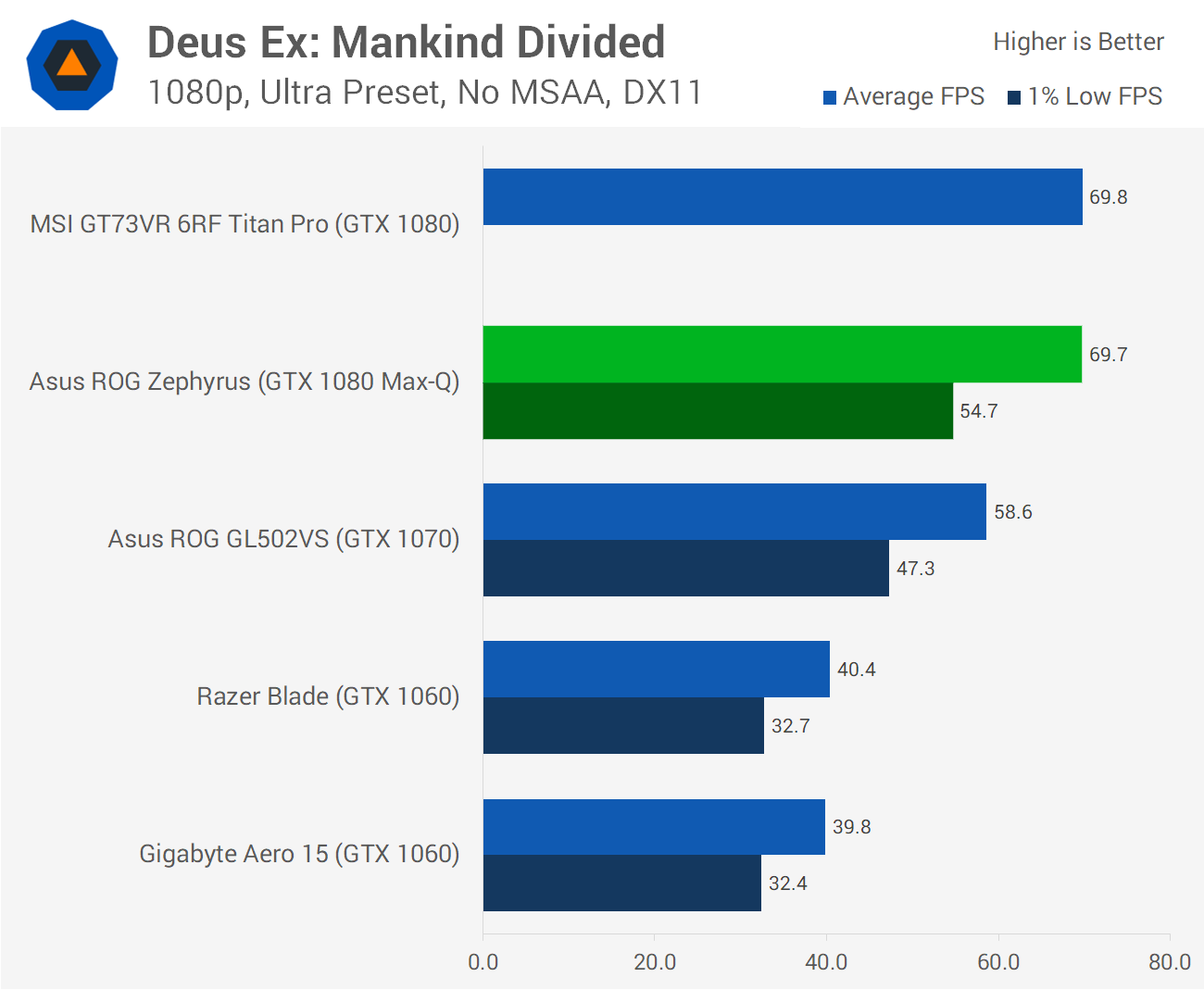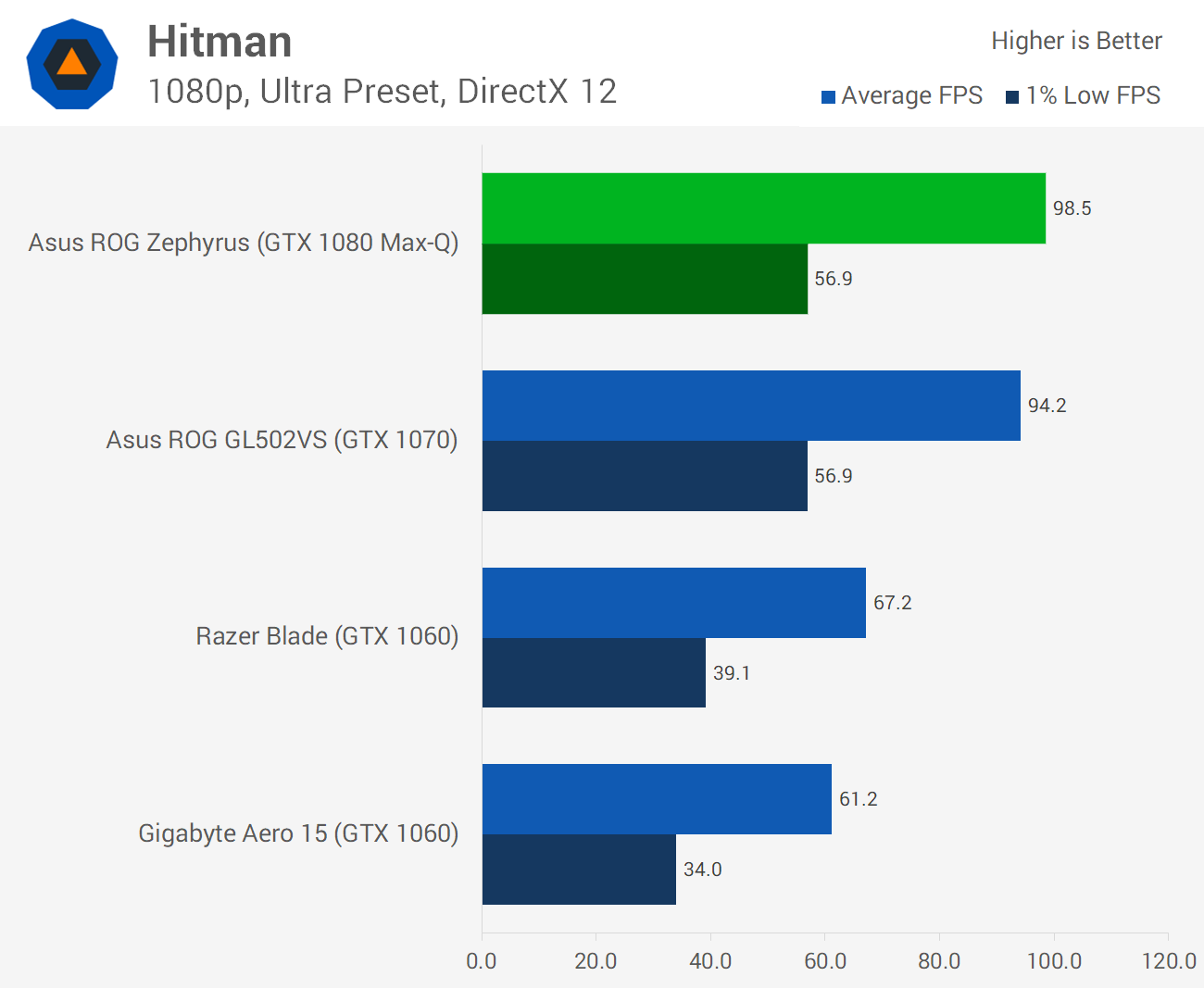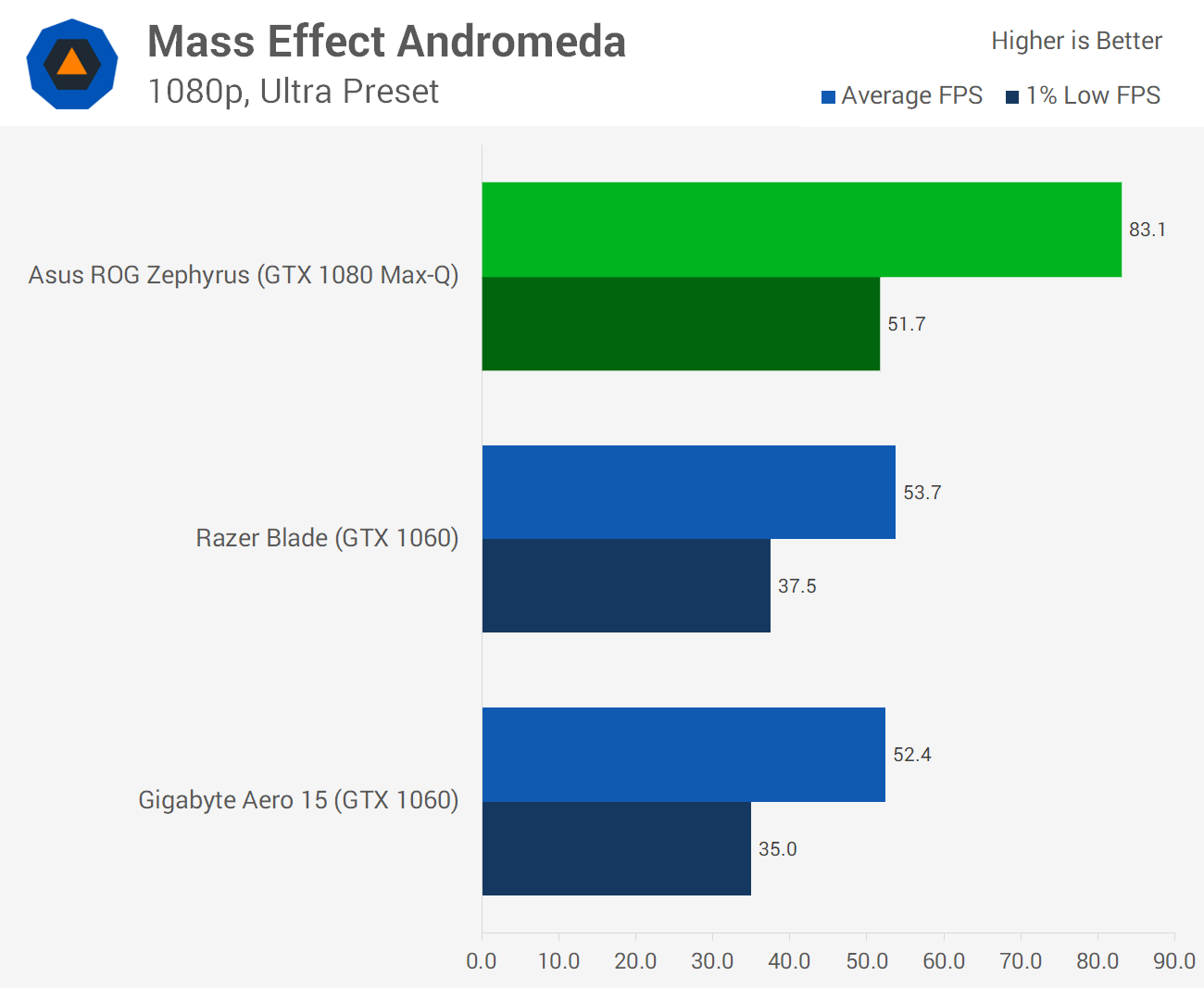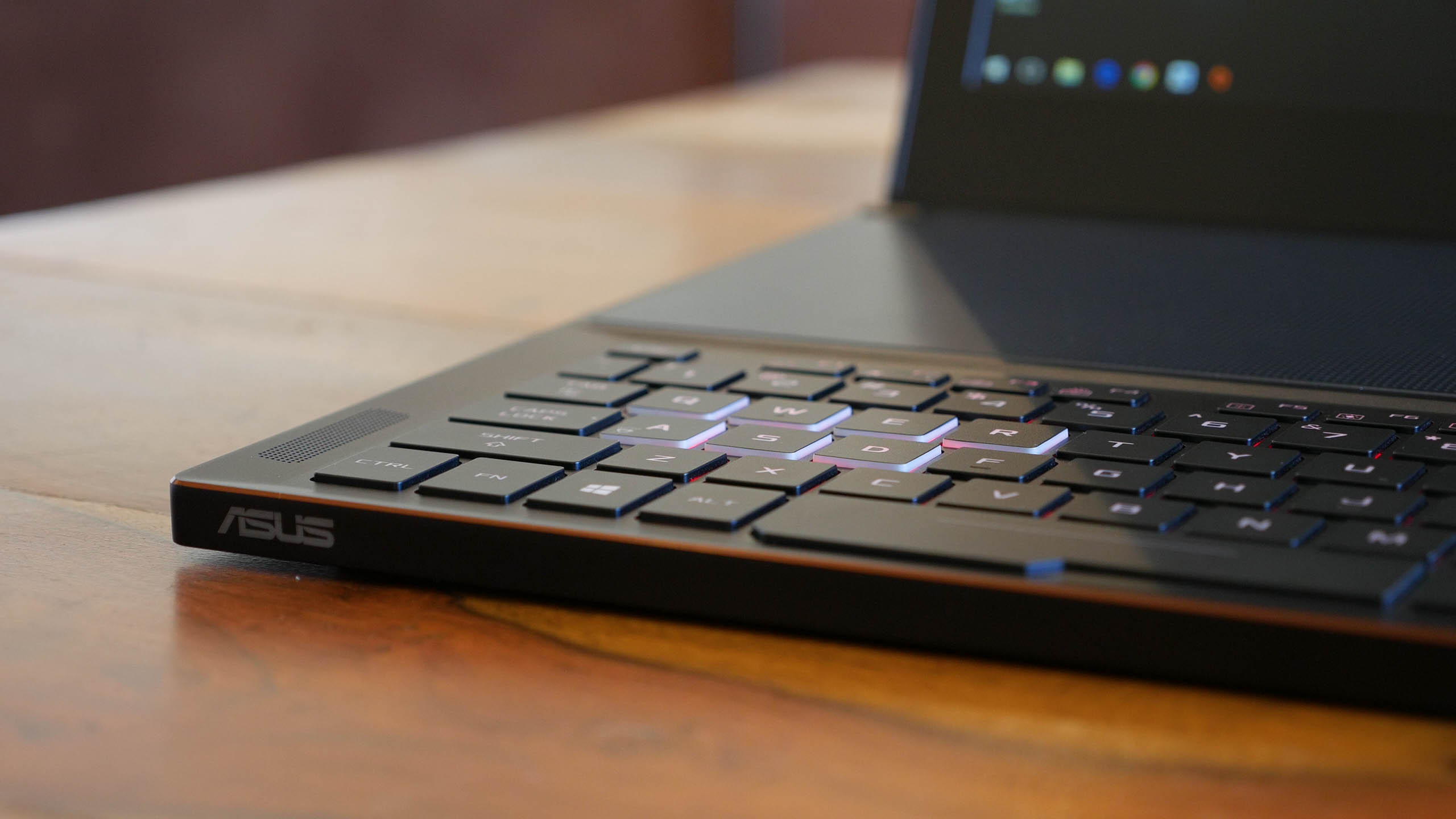Gaming Performance
Obviously, though, you're all interested in gaming results, so let's get right to it.








When looking at average figures across all the games I tested, there are some interesting things to note, particularly when comparing the Zephyrus with its GTX 1080 Max-Q to a GTX 1070 laptop with the same Core i7-7700HQ CPU inside. Here, the Zephyrus was typically around 10 percent faster, with the highest gains of 18 percent seen in Deus Ex: Mankind Divided, and the lowest in Watch Dogs 2, which was only about 6 percent faster.
However this is only factoring in average frame rates. When looking at 1% lows, the GTX 1080 Max-Q takes a stronger lead of 15 percent on average, although in some titles there was no difference in minimum performance. Other games like Rise of the Tomb Raider transform from unplayable to playable at maximum detail settings due to this improvement.
Our GTX 1080 laptop test system, the MSI GT73VR, does have a faster Core i7-6820HK processor inside, but comparisons between this laptop and the Zephyrus do paint an interesting picture. Here, the GT73VR is 10 percent faster on average despite having the same physical GPU inside. Some of this is down to the faster CPU, which can present a bottleneck at 1080p, but some of the most GPU demanding titles see gains around that 10 percent mark.
The end result is that the GTX 1080 Max-Q sits almost exactly between the GTX 1070 and GTX 1080 in terms of gaming performance: 10% faster than the GTX 1070, but the GTX 1080 takes its own 10% lead.
While this performance delta is certainly going to disappoint some that want the best performance out of their GTX 1080 laptop, there are a few things to consider. I've already talked a lot about the size, and that's something to still keep in mind, as the MSI GT73VR I was comparing the Zephyrus to is at least twice the size. Then there's also the fact you can 'overclock' the GTX 1080 in Max-Q laptops to bypass the Max-Q power/thermal/noise restrictions, thereby unleashing the full power of the GTX 1080 chip inside, provided there's enough thermal headroom.
Unfortunately I didn't have time to mess around with overclocking the Zephyrus, but I do believe there is plenty of headroom here. Under the load of AIDA64's stability test hitting the CPU and GPU, the CPU topped out at around 88°C, while the GPU hit 77°C. Now I wouldn't go overclocking the CPU here, and it's not even possible anyway, but overclocking the GPU should be no trouble at all with these sorts of temperature figures.
The other thing to keep in mind is noise. One aspect of the Max-Q design is a noise target of under 40 dBA for the cooler, and the Zephyrus easily hits this even under an AIDA64 stress test, as it's one of the quietest gaming laptops I've reviewed. Now it's not silent, but most gaming laptops with this sort of hardware are outrageously loud when under full load; even slower machines like the Razer Blade are deafening in comparison to this system. You won't need headphones with the Zephyrus: external speakers and even the laptop's in-built speakers can drown out most of the laptop's fan noise while gaming.
